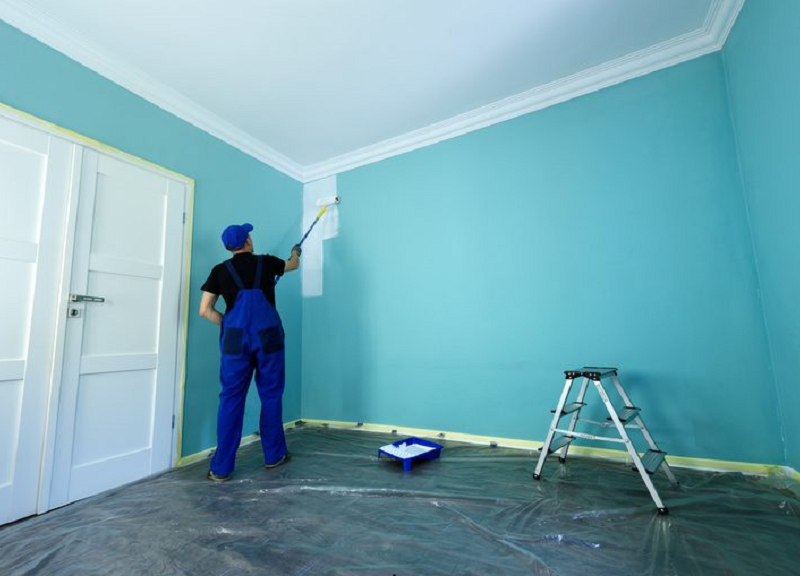The walls of our homes play a vital role in creating a welcoming and visually appealing environment. Over time, however, they can start to show signs of wear and tear. If you’re unsure whether it’s time to give your walls a makeover, this blog post will guide you through the seven telltale signs that indicate your walls require a fresh coat of paint. By paying attention to these signs, you can revitalise your living space, enhance its aesthetic appeal, and create a more enjoyable atmosphere.
1. Faded or Discoloured Walls: One of the most apparent signs that your walls need repainting, is fading or discolouration. Exposure to sunlight, humidity, and daily life can cause paint to lose its vibrancy over time. If you notice the uneven colour or a lack of lustre, it’s a clear indication that a fresh coat of paint is needed to restore the walls’ appearance and rejuvenate the room.
2. Cracks and Peeling Paint: Cracks and peeling paint are not only unsightly but can also signal underlying issues. Structural movements, moisture damage, or inadequate surface preparation can lead to these imperfections. Repainting the walls will not only improve their appearance but also address any structural or moisture-related concerns, preserving the integrity of your home.
3. Stubborn Stains and Marks: No matter how careful we are, walls are prone to stains, marks, and scuffs over time. When these blemishes resist your best cleaning efforts, it’s a sign that repainting is necessary. A fresh coat of paint will cover unsightly stains, marks, and scuffs, giving your walls a clean and polished look.
4. Outdated or Dated Colours: Design trends evolve, and the once trendy colour palette may now feel outdated or no longer reflect your style. If you find yourself feeling dissatisfied or disconnected from the current colour scheme, it’s an opportunity to introduce a fresh look by repainting. Choosing modern, on-trend colours can transform your space and create a renewed sense of harmony and style.
5. Paint Chipping or Flaking: When paint starts to chip or flake off, it not only looks unattractive but also exposes the underlying surface. This can lead to further damage if left unaddressed. Repainting the walls will not only protect them but also ensure a smooth and even finish, restoring the beauty of your space.
6. Scratches and Scuff Marks: High-traffic areas like hallways, entryways, or rooms with active children or pets are prone to scratches and scuff marks. These marks can make your walls look worn and tired. A fresh coat of paint will help to cover these imperfections, leaving your walls looking fresh and new.
7. Change in Room Function: If you’ve repurposed a room or made significant changes to its function, it’s an ideal time to consider repainting. Converting a home office into a nursery, transforming a guest room into a home gym, or updating a dining room to a vibrant workspace may call for a change in colour scheme to suit the new purpose of the room. Repainting the walls will help create the desired atmosphere and give the space a fresh start.
DIY Painting vs Professional Painting
When it comes to painting your home, you have the choice between taking the DIY approach or hiring a professional painter. DIY painting can be a cost-effective option, allowing you to save money on labour costs. It also gives you a sense of accomplishment and control over the project. However, it requires time, effort, and skill to achieve professional-looking results. On the other hand, hiring a professional painter offers several advantages. Professionals have the expertise, experience, and tools to deliver high-quality results efficiently and effectively. They can provide valuable guidance on colour selection, surface preparation, and paint application techniques. Professional painters gold coast also bring a level of professionalism, ensuring a smooth and hassle-free painting process. While it may come at a higher cost, the convenience, expertise, and superior finish provided by professional painters can make it a worthwhile investment, particularly for larger or more complex painting projects. Ultimately, the choice between DIY painting and professional painting depends on your budget, time availability, and the desired level of quality and convenience for your project.
Important Factors To Consider When Re-Painting Interior Painted Walls
1. Surface Preparation: Proper surface preparation is crucial for achieving a smooth and durable finish. Remove any loose or flaking paint by scraping or sanding the walls. Fill any cracks or holes with spackling compound and sand them smoothly. Clean the walls thoroughly to remove dirt, grease, and any other contaminants that can affect paint adhesion.
2. Primer: Applying a high-quality primer is essential when repainting walls with inferior paint. A primer helps to create a smooth and uniform surface, improves paint adhesion, and prevents the old paint from bleeding through. Choose a primer suitable for the type of surface you’re painting, such as a latex primer for latex-based paints.
3. Paint Selection: Opt for a high-quality paint that is specifically formulated for the type of surface you’re painting. Look for paint brands known for their durability and coverage. Consider using paint with built-in primer properties for better adhesion and coverage.
4. Application Techniques: Proper paint application techniques play a significant role in achieving a professional finish. Use high-quality brushes or rollers that are suitable for the type of paint you’re using. Apply the paint in even coats, working from top to bottom and maintaining a wet edge to avoid visible brush or roller marks.
5. Ventilation: Adequate ventilation is important during the painting process and drying period. Open windows or use fans to improve air circulation and help paint dry faster. Proper ventilation also helps to dissipate any fumes or odours associated with the paint.
6. Multiple Coats: Old paintwork may require multiple coats to achieve proper coverage and hide any imperfections. Follow the paint manufacturer’s instructions regarding the recommended number of coats for optimal results.
Conclusion
Keeping an eye out for the signs that your walls need repainting is essential for maintaining a fresh and appealing living space. From faded colours and cracks to stubborn stains and chipping paint, these signs indicate that it’s time to give your walls a makeover. By addressing these issues and applying a fresh coat of paint, you can breathe new life into your home, enhance its aesthetic appeal, and create an environment that is both visually pleasing and welcoming.










